It’s the height of summertime – the days are long and hot, the spring breezes have settled down to a hazy swelter, and the forest has matured from its brilliant spring-green to lush layers of leaves churning out oxygen.
And yet some of the leaves look a little… odd. On a hike last week, I came across the witch-hazel plant pictured above sporting what looked like colorful warts. They ranged from green to pink to red and were scattered over the top sides of the leaves.
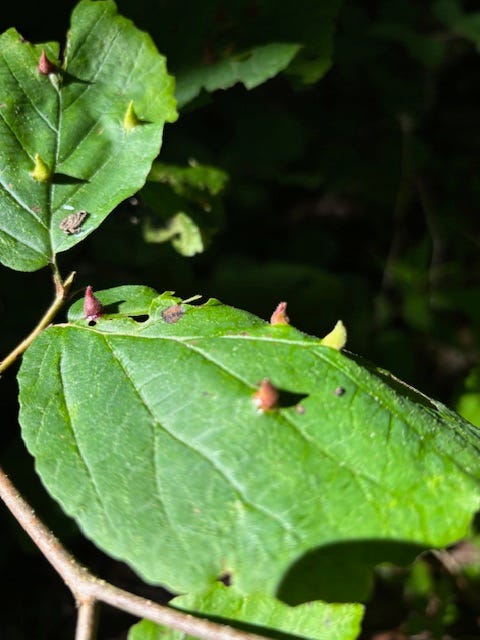
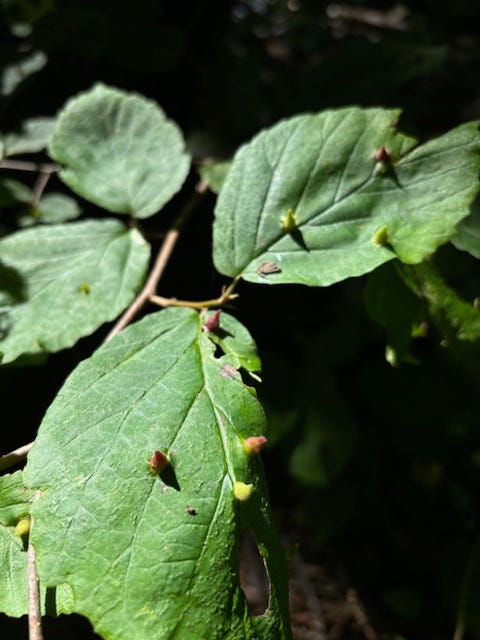
Just a day later, my friend Mel sent me similar pictures of a plant absolutely covered up with these warts, all green:
What are these witchy warts?
Despite my naming them “witchy warts,” they actually have a much more boring name: witch-hazel cone galls. They’re made by an aphid with a 3-generation yearly life cycle: in the early spring, the “stem-mother” hatches from an egg laid in the bark of the witch-hazel and crawls up to a leaf. She then repeatedly stings the leaf and releases a hormone that causes the gall to form around her. The gall is rich in nutrients and serves as protection for the aphid while she lays 50-70 unfertilized eggs that result in the gall being filled with dozens and dozens of female aphids. Why only females? Well, the stem-mother reproduces parthenogenically meaning because her eggs are not fertilized, her offspring are made of her genetic material. I’m not clear on whether these particular aphids could be considered clones of the mother – if anyone knows, please comment below.
This second generation of aphids hatches when the gall turns red, and repeats the process. By the end of the summer, the third generation includes both males and females who mate and lay eggs to overwinter so the process can repeat again the following spring.
Galls are really a case of insects using the fast-growing stage of a plant’s yearly lifecycle to create an abnormal growth that can serve as its home. Aphids can do this, but so can arachnids, some wasps, nematodes (microscopic worms), fungi and bacteria.
For instance, on a different hike last week we saw these odd growths on some black cherry leaves:
It turns out these are called spindle galls and they’re formed by a mite, an arachnid that’s a distant cousin of spiders and ticks. But different than the witchy warts, these galls are a byproduct of the mite feeding on the leaf – as it eats, it transfers a toxin to the plant that affects the leaf’s growth hormone causing it to go a little crazy in the leaf-growing department. The mites crawl inside and are protected from predators while they eat the inner cells of the gall.
These galls don’t actually harm the plant or disturb its ability to photosynthesize unless there’s a large infestation that overloads a young plant. Most established plants have no issues with galls.
There are many, many different types of galls in all shapes, sizes, and colors. If you’ve walked in the woods much, you’ve probably seen an oak apple gall, so-called because they look like green apples when attached to a tree:
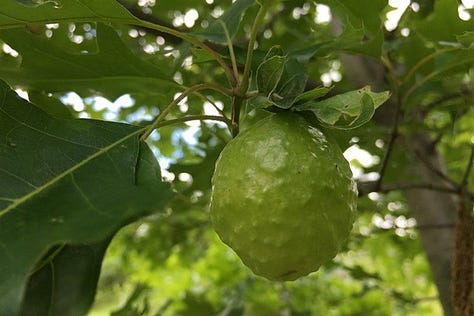
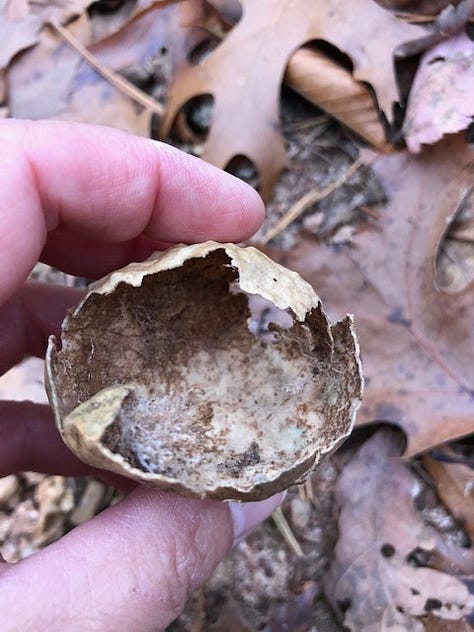
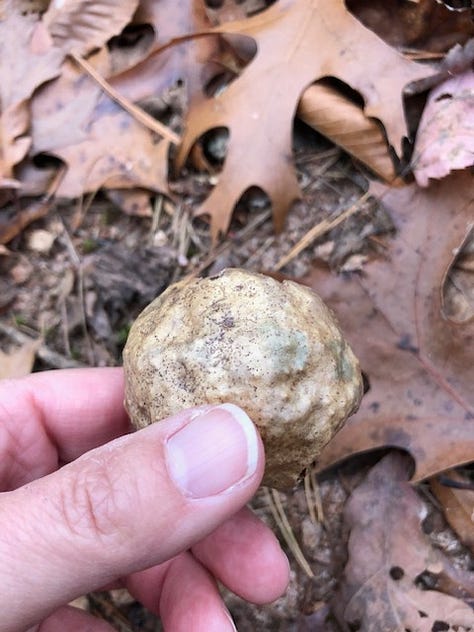
It’s made when an oak apple wasp lays eggs inside the veins of a newly growing leaf. The gall forms around a single wasp larva that lays suspended in cottony fibers that protect it until it hatches.
For the Dr. Seuss version of this, look no farther than the wooly sower gall, which is also produced by a wasp that lives in oak trees:
This gall is like the others – it’s a protective structure, made from the plant’s own material, that grows with the larva inside (see the tiny gall forming on the left in the picture above?). The wasps that create these galls are tiny (only 1/8” or 3 mm) and they have an alternating life cycle – the wasp that hatches out of the leaf gall above will go on to lay its eggs and create a stem gall. But scientists don’t have any idea what that stem gall looks like. Since they’re harmless, I suppose no one’s bothered to research them that deeply yet.
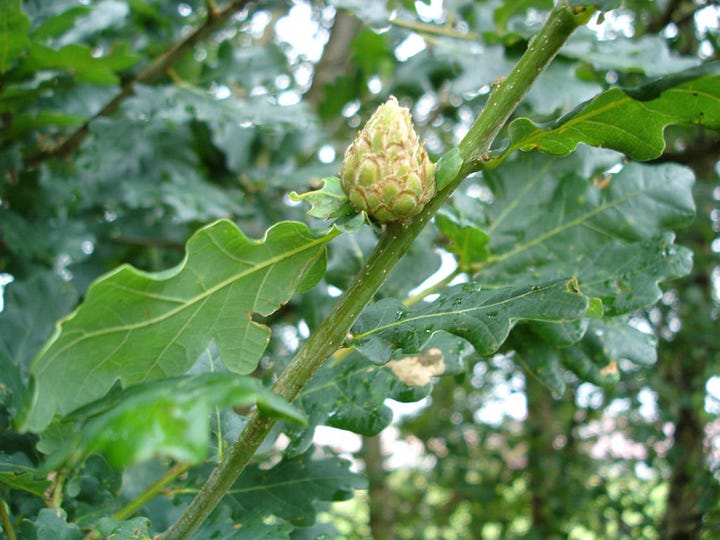
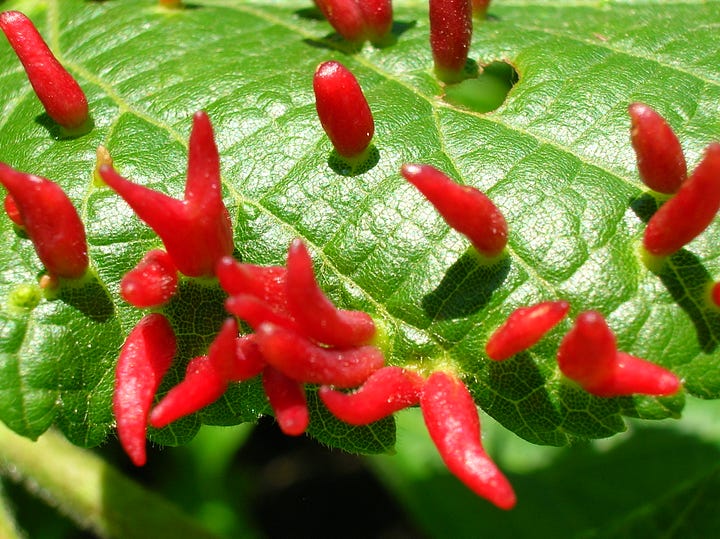
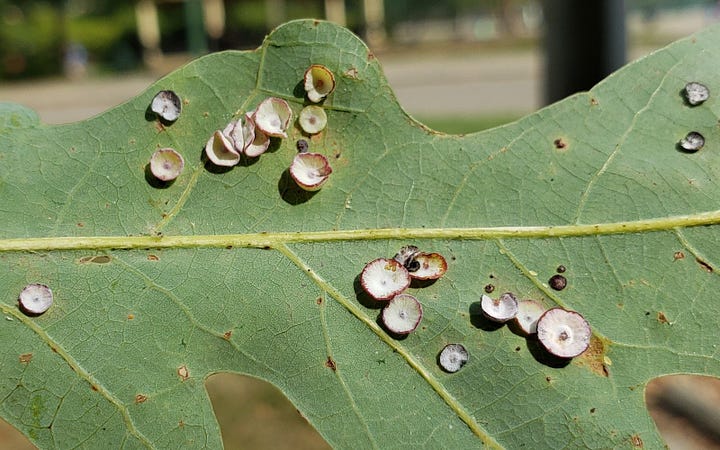
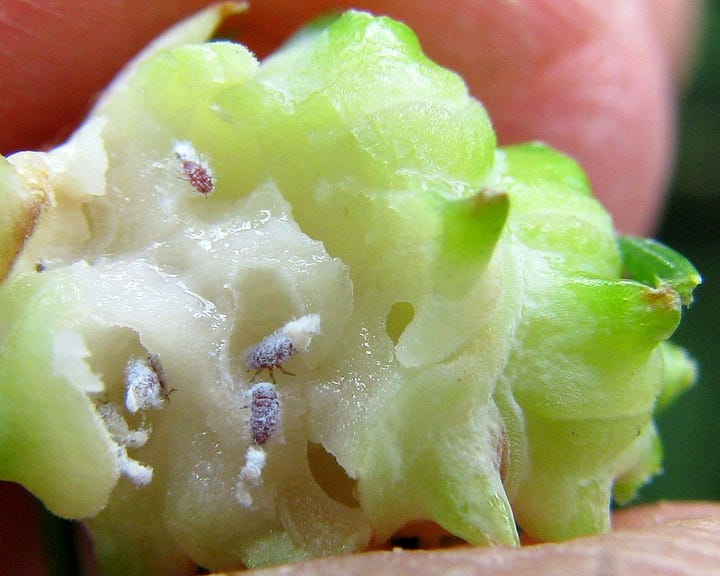
There are many other types of galls as well – some look like tiny pineapples, others like artichokes, and still others look like tiny mushrooms or red jalapeno peppers. None of these are overly harmful to the trees and plants they’re found on. Rather, it’s simply an incredibly creative, oftentimes beautiful, way for a tiny creature to build a home.
Weird Nature:
Click the picture for a rapid-fire video of leaf shapes:

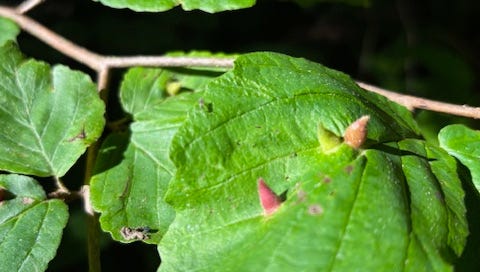



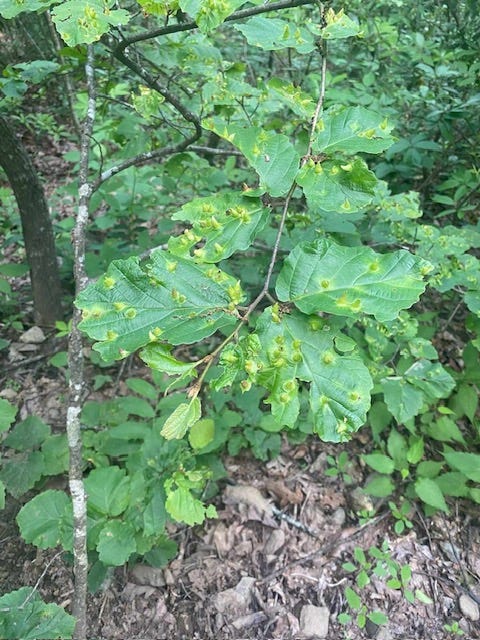

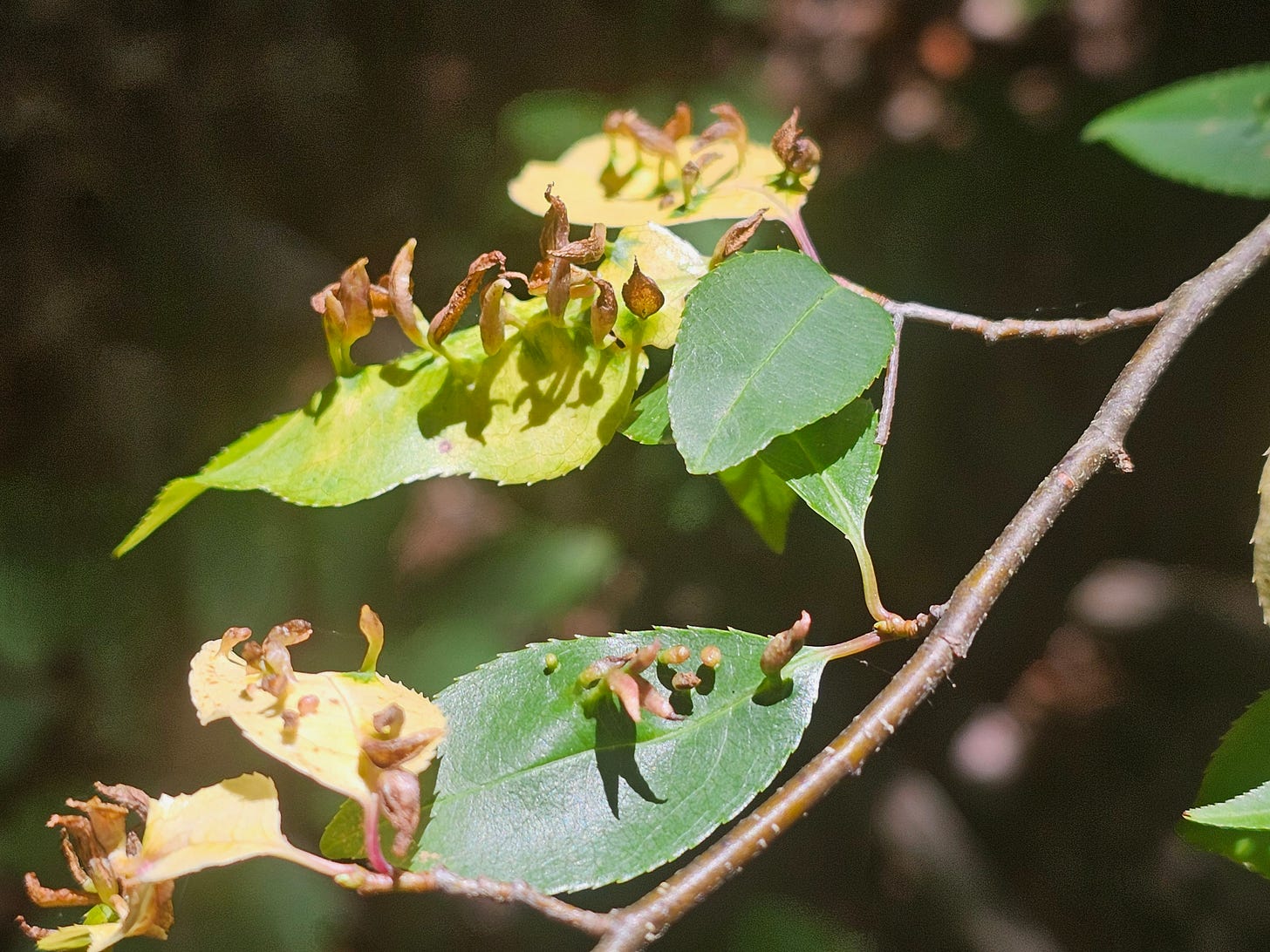
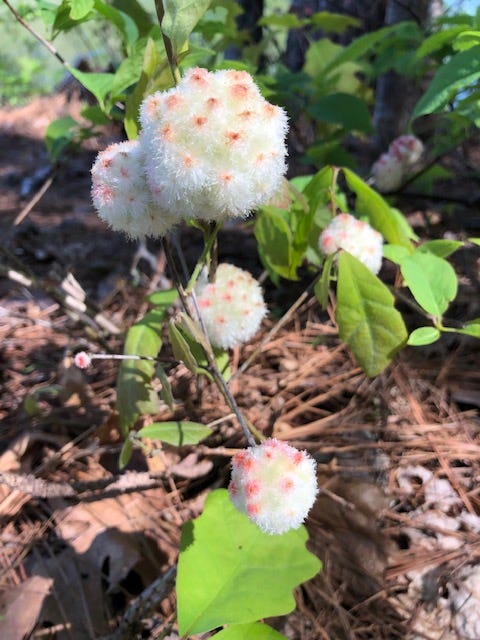
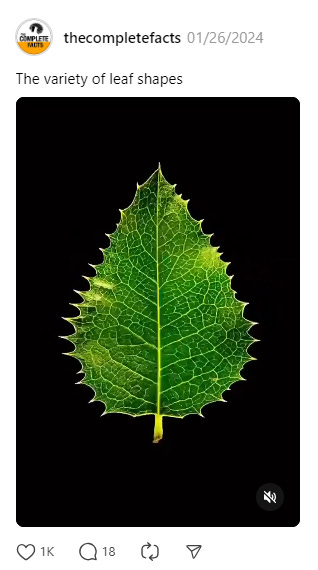
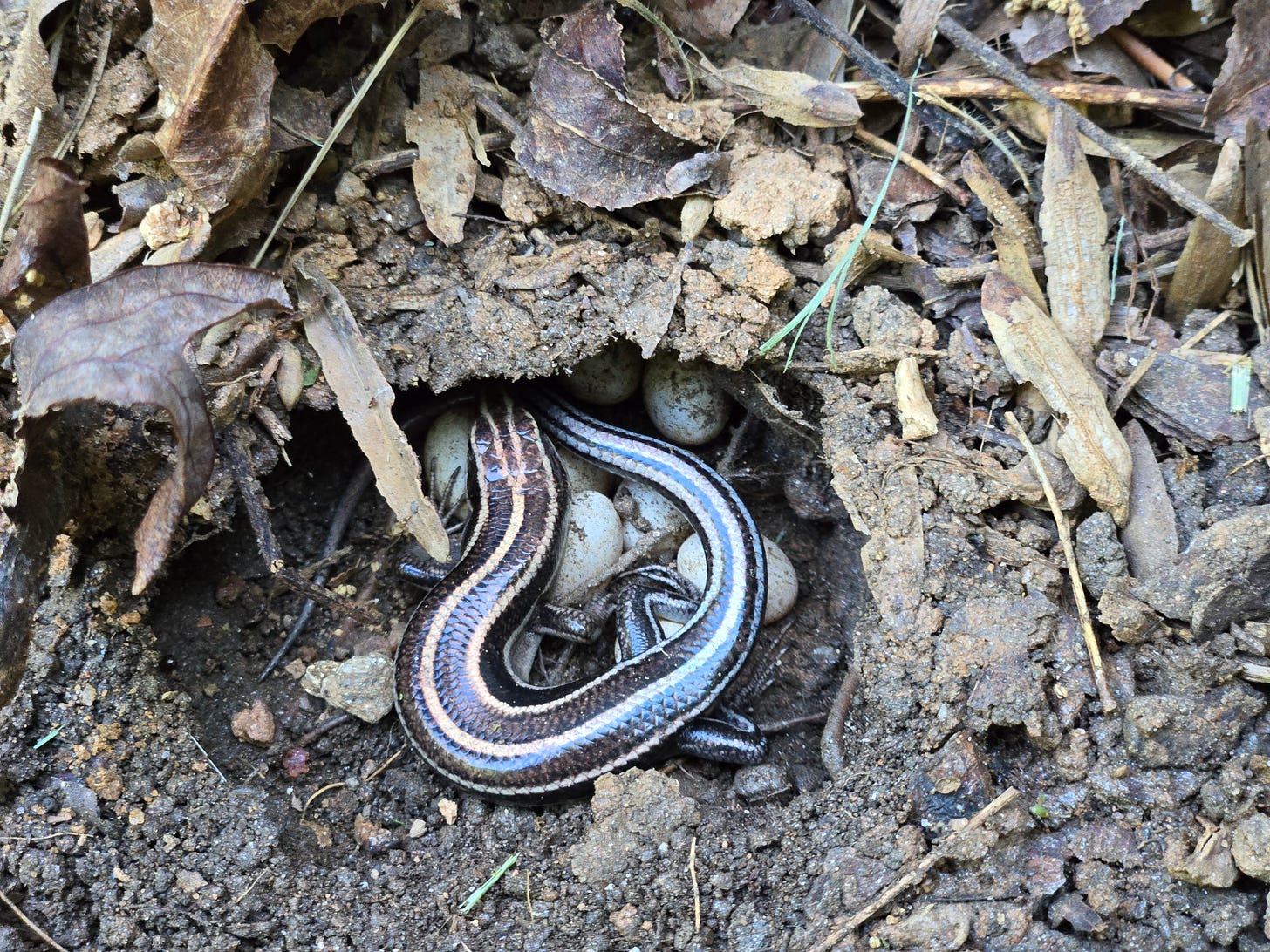
Galls are fascinating, thanks for sharing these examples! The wooly sower gall is amazing, I've never seen anything quite like that.